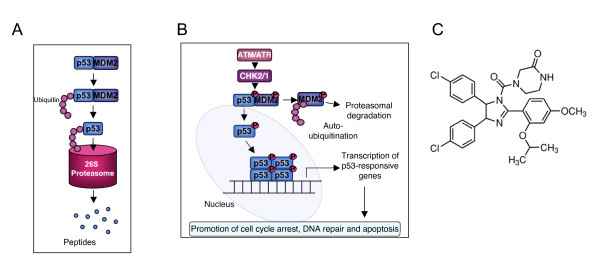Figure 1.
Schematic representation of the interactions between p53 and MDM2. (A) In the absence of stress signals, p53 is bound to its negative regulator MDM2. MDM2 ubiquitinates p53, targeting it for degradation by the 26 S proteasome. (B) Cellular stress signals, such as that bought about by DNA-damage lead to activation of ATM/ATR. ATM/ATR mediate the phosphorylation of MDM2 and p53. Phosphorylated MDM2 undergoes auto-ubiquitination and degradation by the 26 S proteasome. Phosphorylated p53 undergoes nuclear localisation, tetramerisation, and binds to p53-responsive promoters to induce transcription of genes involved in the DDR. (C) Chemical structure of Nutlin-3.

